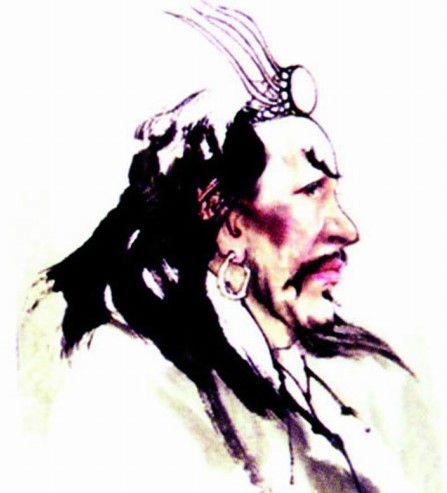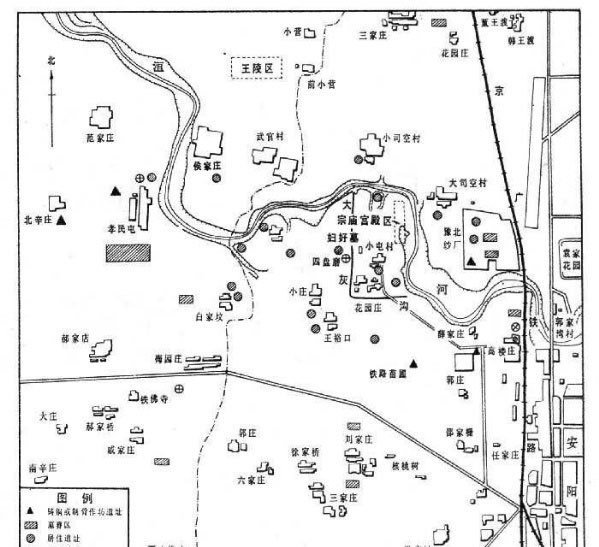Introduction
Pan Geng’s move to Yin was a historical event that took place in the middle and late Shang dynasty, when Pan Geng decided to move his capital to Yin (now Anyang, Henan Province), the site of the present-day Yin Market, in order to save himself from a political crisis.
Background
The background of Pan Geng’s move to Yin can be described as a combination of natural and man-made disasters. In ancient China, setting and moving the capital was a major national event, and rulers over the ages paid great attention to keeping the capital stable in order to stabilize the regime. However, there were many dynasties that moved their capitals to adapt to changes in the ecological environment and political and economic situation, and the Shang Dynasty is a typical example.
When Shang Tang established the Shang dynasty, the earliest capital was in Bo (present-day Shangqiu, Henan Province). In the next three hundred years, the capital was moved five times. This was due to the fact that there were frequent disputes for the throne within the royal family and civil strife, as well as frequent floods in the lower reaches of the Yellow River. There was a big flood that flooded the capital city, and there was also a fierce competition for the throne among the rulers, some of whom said that the father should die and the son should succeed the son, while others said that the brother should end the brotherhood. Some said that the father should die and the son should succeed the son, while others said that the brother should succeed the brother. They made the country chaotic for their own interests. The question of moving the capital had to be considered.
After Pan Geng moved the capital to Yin, the Shang clan settled down and stopped migrating. From then on, the political situation was stable, and the Shang dynasty was strong and prosperous as the vassals came to the court.

Process
After twenty kings from Shang Tang, the throne was passed to Pan Geng. Pan Geng was a capable ruler. He decided to move his capital from Am (present-day Qufu, Shandong Province) to Yin (present-day Xiaotun Village, Anyang) in order to get out of trouble and avoid natural disasters.
This was because there were three advantages to going to Yin.
First, the land in Yin was more fertile, and the natural environment was better than the current capital city of Am, both in terms of building the capital and developing agricultural production.
Second, after moving the capital, everything would have to be done from scratch, and the royal family and nobles would be suppressed, so that class conflicts could be eased.
Thirdly, by moving the capital, he could avoid the attacks of the rebellious forces, and the capital would be safer, so there would be less interference from the outside, and his rule would be much more stable.
Pan Geng’s move to Yin was opposed by almost all of the kingdom, and most of the nobles were reluctant to move because of their desire for comfort. Most of the nobles did not want to move. Some of the powerful nobles also incited the common people to oppose the move, and there was a lot of trouble. In the face of the strong opposition, Pan Geng did not waver in his determination to move the capital. He raised the two banners of “Mandate of Heaven” and “First King” and claimed that he was planning for the people to win their hearts. At that time, there was no doubt that the “Mandate of Heaven” and the “First King” were powerful, so Pan Geng was able to move the capital to Yin. He brought the nobles who opposed the move to Yin and patiently persuaded them, “I want you to move because I want to stabilize our country. But instead of understanding my painstaking efforts, you have become unnecessarily alarmed. It is impossible for you to change my mind.” When he was about to move, Pan Geng warned, “If there are unlucky and disobedient people, and if they are not respectful, and if they are temporarily encountered with a malefactor, I will wipe them out, so that no one will be left behind, and no one will be easy to grow in the new village. It is evident that Pan Geng attempted to combat the nobles by moving the capital.
The result
As Pan Geng insisted on moving the capital, he defeated the opposing forces and finally took the commoners and slaves across the Yellow River and moved to Yin (the present-day village of Xiaotun in Anyang). After moving the capital, Pan Geng reiterated that “there is no distant or distant place, but the death of a person who commits a crime is punished, and the goodness of a person who achieves merit is rewarded, regardless of his relationship with the Shang king. This shows that by moving the capital, the dissidents were suppressed and the authority of the Shang king rose.
Follow-up
After a period of struggle, Pan Geng finally completed the plan to move the capital by using both hard and soft means. However, the struggle did not end there, as the people were uncomfortable in many aspects when they arrived at a new place and asked to move back to their hometown. The slave-owning nobles took advantage of the opportunity to cause trouble and incite people to demand moving back to their hometowns. At that time, Pan Geng issued an admonition against the situation and warned the slave-owning nobles again with a strong attitude not to make trouble, or they would be severely punished. Only then did the situation settle down.
Influence
From then on, the capital of the Shang Dynasty was permanently fixed in Yin, where Pan Geng reorganized the politics of the Shang Dynasty, which was more stable politically and had a greater socio-economic and cultural development. Later, after the prosperous development of the Wu Ding era, by the middle and late Yin dynasty, it had developed into one of the largest and most prosperous capital cities in the world. This led to the revival of the declining Shang dynasty, and the capital was not moved for the next 200 years. This is why the Shang Dynasty was also known as Yin Shang, or the Yin Dynasty. In modern times, a large number of ancient relics were unearthed in the area of Xiaotun Village in Anyang, proving that it was once the site of the Shang Dynasty’s capital, so it was called “Yinxu”.
Evaluation
The move of Pan Geng to Yin avoided the chaotic situation of flooding and internal struggles within the clan, stabilized the central rule of the Shang dynasty, and laid the foundation for the subsequent rise of the Shang dynasty. This helped the slave-holding state to escape from its difficult situation and to develop further. It was an important milestone in the history of Chinese civilization, and made China a major civilization in the world at that time.
Controversy
As the site of the capital of the late Shang dynasty, Yinxu was once one of the earliest long-term stable capitals in Chinese history and an extremely unique major world city in the Middle Bronze Age East. Many historians and archaeologists have speculated about which king of the Shang dynasty began building his capital here, and whether Yinxu was the capital city to which Pan Geng moved.
In the spring of 1998, the archaeological team began to concentrate on drilling in the vicinity of Huanbei Huazhuang, Han Wangdu and Qu Wangdu, which are close to the ruins. After eight months of arduous investigation, a capital city site with an area of 4.7 square kilometers was found in the northeast of Yinxu, and it was named as “Huanbei Mall”.
The discovery of Huanbei Mall solved the doubt of the place where Pan Geng, Xiao Xin and Xiao Yi moved to before Wu Ding. The beginning of Huanbei Mall should be built in the second phase of the Shang Dynasty, and some of the building sites were built in the third phase of the Shang Dynasty, and “Pan Geng moved to Yin” was moved to Huanbei Mall. And “The Records of the Grand Historian” records: “The emperor Pan Geng’s time, Yin has been the north of the river, Pan Geng crossed the Henan River, and resumed living in the former residence of Cheng Tang, is five moves, no fixed place.” The “Pan Geng crossed Henan” and “Pan Geng moved Yin” are not two places, but refer to Huanbei Mall. According to the existing research results of Huanbei Mall, the era of Huanbei Mall is roughly in the middle and late Shang Dynasty, and can be divided into early and late sections, the early section is the period of survey, site selection and preparation of Huanbei Mall, the late section is the period of use of Huanbei Mall. The early remains of archaeological culture of Huanbei Mall are the remains left by people at the early stage of building Huanbei Mall. In this period, Pan Geng regime did not move to Yin land officially. The late remains of the archaeological culture of Huanbei Mall should be the cultural remains left by the Pan Geng regime after moving to Yindi. According to the available information, Huanbei Mall will not be used for a long period of time, because the three emperors’ regimes, Pan Geng, Xiao Xin and Xiao Yi, were inherited by brothers, it is estimated that the age difference between the three of them will not be too big, and the three emperors’ reign time in Yin will not be more than 30-40 years. In the Ancient Book of Bamboo Chronicles, the location where Pan Geng moved to Yin was probably on both sides of the Beijing-Guangzhou line on the north bank of the Huan River at Anyang, which also refers to the Huan Bei Mall. After Wuding’s reign, the state flourished and moved to the known Yin market centered on Xiaotun.
